Feusse strikes while the iron is hot
September 12, 2019
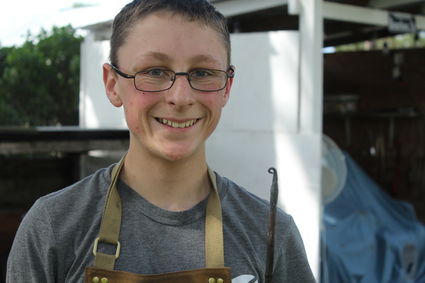
LuAnn Schindler
Nathan Feusse shows one of his many creations he makes in his blacksmith area at his home in Clearwater.
It starts with a wadded piece of paper, topped with pieces of wood and chunks of coal.
Once flames ignite, Nathan Feusse cranks the handle of the blower, building a blaze hot enough to meld metal.
He raises a hammer in the air, pounds the piece until it breaks clean and returns the metal to the fire.
A modern-day blacksmith, Feusse has created a makeshift workshop in his family's backyard in Clearwater.
Here, he has crafted a variety of knives and hooks and experiments with different pieces to create distinct styles.
How did his interest in blacksmithing develop?
"I've always loved playing with fire," Feusse said.
He found a piece of leftover rebar and his father, the Rev. Daniel Feusse, told him "I could mess with it."
"I wanted to heat it up so it was red hot so I could burn wood."
After that, Feusse's inquisitiveness led him to taking a hammer to the metal "to see if I could deform it."
For the past year, he's been perfecting his forging form.
"I didn't start forging until November."
Like early smiths, Feusse relied on a wood campfire in the beginning, but he soon discovered metal would not heat to a high enough temperature.
He utilized an old air mattress blower to feed the fire, but eventually it gave out.
"For Christmas, I got a hair dryer and used that until I burned it out."
Eventually, Ron Westlake, a historical blacksmith from Norfolk, gave Feusse a small forge with a blower attached.
Other family friends have fueled Feusse's interest.
Duaine Filsinger, of Clearwater, has provided coal.
Feusse's first project was a knife made from an old file.
"I've always liked sharp things and it fascinates me," Feusse said.
He estimates it took a day to complete the blade, while the handle took several days.
"It's kind of trial and error. I made one handle and as the metal was going through, I accidentally hit it on the finger notch and had to start over with a new piece," he said.
In past designs, he used rebar or an old file to build blades. He's experimented with tapered blades and daggers.
Constructing knives can be difficult. Some of the knife handles took longer to design. He uses scrap wood from a local woodworking shop to make handles.
Feusse draws inspiration from the television show Forged in Fire.
"We watch it almost every Sunday," he said. "It's given me some words and techniques."
Blacksmithing dates to 1350 B.C., Egypt, where the Hittites invented forging and tempering prior to the early Iron Age.
Today's blacksmith equipment includes an anvil, tongs and hammer.
The Clearwater youth utilizes it all.
The anvils he uses include a tractor axle, a slab of iron and an old railroad tie.
"I had to cut off the edge and grind it down to the right shape."
Since he began smithing, Feusse thinks his technique has improved.
"I can tell I've gotten better, but I've also got better tools to work with."
His parents are supportive of his interest in the lost art.
Dan Feusse said as a youngster, Nathan's curiosity about how things work was apparent.
"As he got older, he became interested in designing and building his own creations. This has led to his deep interest in both metalworking and woodworking, which he now combines to make knives, daggers, hatchets and other semi-dangerous products. He also likes to make useful objects, like rustic hooks," Dan said.
Nathan's mother, Kathy, said as parents, they were concerned for his safety when he started his hobby.
Nathan wears a blacksmithing apron and leather gloves when forging.
"He has showed us time and time again that he is careful and doesn't rush when using power tools or flaming hot forge," she said.
That doesn't mean there haven't been times when he's cut or burned himself.
"He has learned from those mistakes and what he needs to do to prevent worse injuries," she noted.
Blacksmithing feeds Feusse's interest in engineering, a possible career path when he graduates in two years.
Smithing can be an expensive hobby, and Feusse plans to supplement his interest by making and selling hooks and decorative leaves.
"It's just something I really enjoy doing," he said.



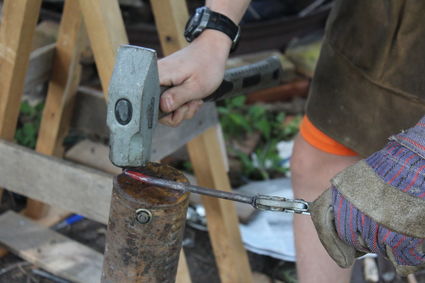
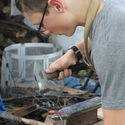
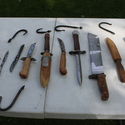

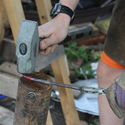
Reader Comments(0)